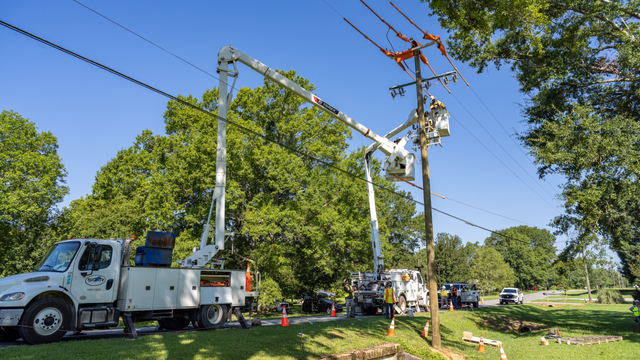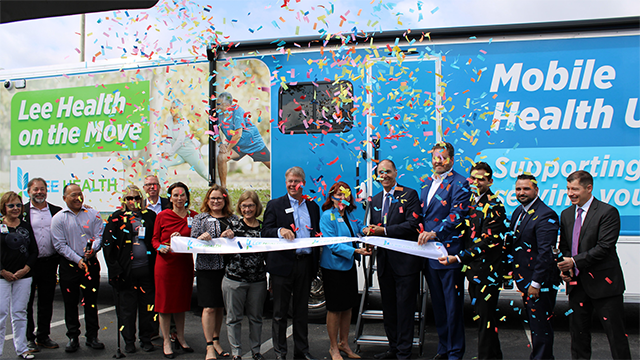The cost of solar and wind continue to fall while consumers demand more low carbon energy, driving U.S. electric utilities to broaden their portfolio of cleaner generation. Responses to Black & Veatch’s 2020 Strategic Directions: Electric Report survey — which polled more than 600 stakeholders from across the electric industry — show that utilities actively are preparing for the increased penetration of renewable energy and distributed energy resources (DER), redesigning their rate and pricing structures and making calculated short term capital investments as they work to meet regulator and customer demands.
Making Strides in Preparing for DER
This year’s survey shows that most utilities are not only aware of, but actively preparing for, the increased penetration of renewables and DER. According to survey data, a combined 68 percent of respondents are working to redesign their regulated rate and pricing structures to accommodate an increased penetration of DER. Fifteen percent have completed this effort, 53 percent are in the process, and 22 percent said they are considering taking such action.
Admittedly, the ratemaking process is lengthy and complex, starting with conceptualization discussions to determine if the utility wants to move away from a volumetric pricing structure and towards something more value-driven around how the grid is used. Utilities must observe and study the market, and actively plan for load growth, population growth and geographic expansion.
From there, the process typically would move into discussion with economists and regulators, then progress to the study and working group phase (including stakeholders) before moving to modeling, design and testing. If the utility is on the forefront of the effort, it could be completed in four to five years, while those utilities who come after may see a slightly reduced timeline. The challenge is for utilities to make these changes in a dynamic market where DER solutions like renewables are being actively deployed by commercial, industrial and governmental entities who have fewer barriers to entry in deploying DER assets. It’s akin to planning and laying down tracks as the train is coming down the line.
Only one out of 10 respondents said they are not participating in this work, which suggests that they either haven’t started thinking about DER yet or they may be slow adopters. That grouping could include small co-ops and municipalities that prefer to wait and watch from the sidelines while the larger players go through the process first, smoothing the road ahead for them.

Even as utilities address the need to revise their rate and pricing structures, they remain challenged by certain elements of DER. According to survey results, the ability to forecast, monitor and manage utility-owned and third-party DER is the No. 1 challenge facing utilities today, according to two-thirds of respondents, followed closely by clear DER regulation and policy (59 percent) (Figure 16). The remaining challenges are industrial and commercial self-generation, electric vehicles (EVs), household self-generation, and a small amount of “other” responses.
It is unsurprising that DER management is seen as a top challenge, given both the plethora of DER and the broad expanse of their integration and management needs. It is interesting to note that concerns over electric vehicles (EVs) ranked lower than expected, given the level of ongoing discussion around their charging infrastructure needs. This may be because EVs are a known quantity, and their complexities may pale in comparison when stacked against the other concerns.
Investing in Renewables, Other Systems
When it comes to short-term capital investments in renewables and associated technologies, local renewables saw the greatest growth in funding, with 46 percent of respondents stating that they are investing more money in local renewables compared to last year. Nearly half (45 percent) are making similar investments, while 9 percent are investing less.
Transmission and distribution were closely tied and showed similar results, with 39 percent of respondents investing more money than last year. Approximately half are investing a similar amount, while a little more than one in 10 respondents are investing less. Survey data shows that investor-owned utilities (49 percent) and publicly-traded corporations (48 percent) are focused on distribution, while cooperatives (43 percent) are more invested in transmission.
Investment in DER was a little flatter, with 31 percent investing more, 59 percent making a similar investment to last year, and 10 percent investing less. Publicly-traded corporations and investor-owned reported similar interest in DER, at 38 percent and 35 percent, respectively.
Generation saw the least growth in investment, with only 19 percent of respondents investing more, 53 percent making a similar investment to last year, and 27 percent investing less. More than one-third of private corporations invested in generation, more than the three other categories.
Of those investing in local renewables, publicly traded corporations are leading the charge, with 56 percent of respondents stating they invested more money this year, followed by private corporations (44 percent), investor-owned utilities (39 percent) and co-ops (23 percent).

Regulators, Customers Continue to Drive Change
Most utility respondents — a combined 85 percent — said they are working towards some type of carbon reduction, greenhouse gas emissions reduction and/or renewables goal. A little over half include goals independent of regulatory mandate, while two out of five have goals as part of state mandate.
It is no secret that government regulators and more recently corporations (e.g., data center owners) are the driving forces behind utilities’ renewable energy investments. Regulators are the primary driver, reflecting utilities’ need to adhere to renewable portfolio standard (RPS) legislative mandates, designed to increase renewable energy generation. Respondents pointed to regulators (58 percent) and customers (51 percent) as holding far more sway than the financial and investment sector (32 percent), employees (31 percent), shareholders (29 percent), the technology sector (23 percent) and interest and lobby groups (17 percent).
The factors driving renewable energy investments align with these responses, as deeper analysis shows that motivation is derived primarily from governments; government incentives and/or policy; increased shareholder pressure and sustainability goals; and increased demand from residential customers. Although not surprising, it is interesting to note that these top four drivers outweighed all the other things such as finances and efficiencies that make projects float. To this point, utilities continue to respond and react to demands — from governments, regulators, customers — rather than their own perceived operational benefits.
The Future of Renewables
So where does the electric utility industry stand when it comes to meeting their carbon, emissions or renewables goals? Thirty-seven percent of respondents said they are less than 40 percent of the way towards meeting their goals, 30 percent said they are between 40 and 59 percent, and the remaining one-third said they are more than 60 percent of the way towards achieving their goals. This is promising, if reality reflects the utilities’ estimates.
When compared to their peers, a combined 83 percent see themselves as either ahead or on pace with their peers, with 17 percent considering themselves “behind.” Again, this may be overly optimistic, but if the facts pan out, it shows the electric utility industry is taking the shift towards renewable energy seriously and making the necessary strides to get there.
Although renewable energy adoption and migration is specific to each utility, depending on where they are located, their state mandates and the technologies available to them, the industry as a whole is evolving relatively rapidly, pursuing greener, cleaner energy options in the global shift to low-carbon power generation.
About the Author
Frank Jakob is the technology manager for energy storage within Black & Veatch’s power business. Jakob focuses on storage solutions for renewable and conventional electricity generation at distributed and utility scales. With more than 40 years of experience, Jakob advises industry, utility, developer and government clients, as well as the internal Black & Veatch engineering, procurement and construction (EPC) teams regarding the application, design, and uses of energy storage systems for stationary applications.
Denise Nelson is a principal with Black & Veatch Management Consulting’s advisory and planning group, where she is leads project teams in the power generation, electric utility and gas transmission and distribution sectors of the industry. A seasoned expert, Nelson is skilled in bridging the technical aspects of a project with its business needs, from project development through to strategy and transactions support.
Sam Scupham is the director of renewable and distributed energy for the Asia region within Black & Veatch’s power business. With more than 20 years of experience, Scupham is responsible for the growth of Black & Veatch’s engineering, procurement and construction and consulting services business across Asia.
Sean Tilley is the global technology portfolio manager for the renewable energy group within Black & Veatch’s power business. With more than 16 years of global experience across multiple renewable energy technologies, Tilley focuses on the optimization and growth of the company’s portfolio of renewable energy project solutions and expertise to meet current and future client needs globally.





